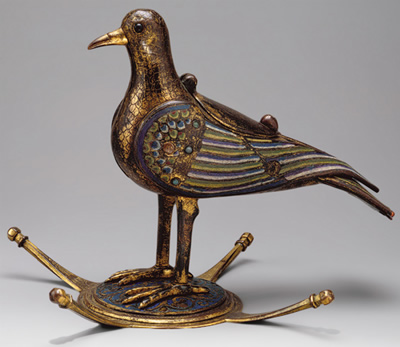History of bird paintings
Bird Paintings, many art critics say, stand for the soaring aspiration of human beings. Flying through the air, perched on a lifeless tree, or sitting in a wildflower meadow, birds continue to stimulate our imaginations. The ancient cave dwellers drew pretty much everything they saw in their daily lives on the wall of the caves, but birds literally gave wings to their imagination. Fanciful depictions of various birds fill the ancient walls of caves in Bhimabetaka (India) and Spain.
Bird Paintings made its first appearance in Chinese paintings in the mid T'ang dynasty (618-907 A.D.). In Europe, Art meant Christian Paintings for many centuries; and Christian paintings were all about religion. Therefore, artists who wished to paint birds had to include them in religious scenes as a small part of the picture. By the Mid 1600's the atmosphere in Europe was somewhat relaxed, religion slowly stopped dominating each and every aspect of human life and artists could paint pictures of birds by themselves as well as in landscapes if they wished. Holbein, Rubens, Rembrandt, and Leonardo Da Vinci were only a few of the artists who included birds in their paintings. In the early 1700's, George Edwards, sometimes known as the "father of British ornithology", produced many beautiful paintings of both European and exotic Oriental birds. In the 19th, John James Audubon produced some exquisite sketches, etchings and paintings of birds. He is considered by many as the greatest bird painter to date. |


